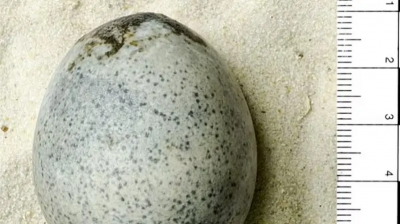In a new scientific discovery that may answer many questions, a recent analysis documented an intact speckled egg dating back to the Roman era, containing a liquid yolk and albumen inside. The rare and intriguing archaeological egg, which is approximately 4 centimeters wide, was found in Berryfields, United Kingdom, in a water-filled pit, which is believed to have helped preserve it incredibly well.
Dana Goodburn-Brown, an archaeologist at DGB Conservation, conducted a meticulous cross-sectional examination of the egg, confirming that it remains full of liquid and an air bubble, according to a report by the British newspaper "Daily Mail." The egg was one of four discovered during excavations at Berryfields between 2007 and 2016, prior to the establishment of a new residential area.
These artifacts were part of an "exceptional" collection, which also included a woven basket, pottery, coins, leather shoes, and animal bones. However, three of the eggs were broken and emitted a "strong, foul smell of rotten egg," which attendees described as "unforgettable" and "incredibly sulfurous." The Oxford Archaeology authority, which oversaw the excavations, stated that someone may have placed the eggs inside the basket and into a Roman well for good luck, similar to the practice of wishing wells today.
In Roman society, eggs symbolized fertility and birth, so they might have been related in some way to another item placed there at the same time. The egg has recently been transported to the Natural History Museum in London to gather opinions from Douglas Russell, the museum's senior curator for bird eggs and nests.
Researchers now aim to extract the liquid contents from the egg without breaking the shell, although the method for doing this precisely remains a matter of consideration. One option might be to make a careful incision in the shell to drain the contents, although this could cause rupture.




